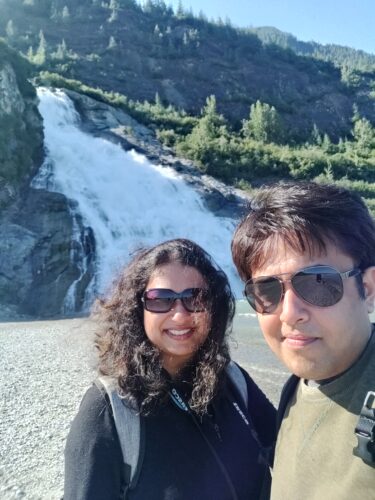Emerging patterns in large random systems
December 5, 2021
Sayan Banerjee’s interview with Endeavors. Sayan Banerjee is an assistant professor in the Department of Statistics and Operations Research within the UNC College of Arts & Sciences. He studies emerging patterns in large random systems.
Q: When you were a child, what was your response to this question: “What do you want to be when you grow up?”
A: A writer. I spent a lot of time writing poems and short stories and participating in elocution contests. My grandfather was a romantic at heart, and he inspired in me a deep appreciation for literature. I always liked math, but more in the form of solving puzzles that gave that all-too-familiar dopamine rush. It was only later in life that I realized that creativity has a universal appeal, be it through poetry or through mathematical theorems, and I chose the latter avenue.
Q: Share the pivotal moment in your life that helped you choose your field of study.
A: In high school, I subscribed to a math magazine called Mathematics Today, which contained weekly challenges. I started spending more and more time thinking about them and awaiting solutions that were published the following week. I would attribute the start of my mathematical career to those challenges.
Later, at the Indian Statistical Institute, I was lucky to have been taught by several influential Indian mathematicians of the time who introduced me to the more “poetic” side of mathematics. Instead of solving specific problems, the focus there was to develop general abstract theory to set intuition on a logically sound pedestal.

Banarjee and his wife on a recent trip to Juneau, Alaska.
Q: Tell us about a time you encountered a tricky problem. How did you handle it and what did you learn from it?
A: Early in my PhD, I asked my advisor, Krzysztof “Chris” Burdzy, for a thesis problem. I was expecting him to tell me to read a bunch of research papers and extend or generalize an existing result. Instead, he gave me a picture! It was a snapshot of an evolving process comprising a bunch of particles, where there was a “leader” who moved in some random fashion — called a random walk or Brownian motion — and the remaining particles followed the leader. As the number of particles grew, this “Brownian conga line” showed interesting geometric patterns. On seeing the confused look on my face, Chris said that a big part of my PhD will be trying to interpret this picture.
I read, learned, and applied whatever I thought was useful to understand it. Most techniques failed. Some worked. In the course of a year, this problem taught me more about research than anything else before or since. A good research problem is what puts you out of your comfort zone and challenges what you think you know. This one shaped my view of research. I don’t quite care if the problem I am working on concerns the hottest topic, as long as it makes me intellectually curious and leads to new and elegant mathematics.
PS: The “Brownian Conga Line” eventually became the main part of my thesis. It got published in one of the top probability journals.
Q: Describe your research in 5 words.
A: Random thoughts on random things.
Q: What are your passions outside of research?
A: I have always been somewhat of an amateur musician (vocals and some guitar). Both my parents are musically inclined, and they were a big influence growing up. Throughout college, grad school, and my years at UNC, I have been part of amateur musical groups. I have had far more good ideas while strumming my guitar than when I am actually working.
Besides, I am really into coffee. I did most of my research in cafés before the pandemic. I work well with passive distractions like the buzz of a café. During the pandemic, I was going crazy until my wife got me an espresso machine. We ceremoniously take Saturdays off from work to try out different brunch places and hang out in libraries.
